![Best Concealed Carry Guns In 2024 [Field Tested] Best Concealed Carry Guns In 2024 [Field Tested]](https://gundigest.com/wp-content/uploads/Wilson-Combat-EDC-X9S-1-768x496.jpg)
We shot and carried a ton of concealed carry guns. Here are the handguns we find fit to cover your six.
Finding a handgun you can confidently use and comfortably carry every day is crucial. With countless options available, navigating through the various sizes, styles, calibers, and price points can be overwhelming. That’s where I come in—to guide you through some of the top choices for concealed carry guns currently on the market.
How I Chose The Best Concealed Carry Guns
I’ll start by saying that selecting these concealed carry guns was a team effort. Each of these guns was shot, tested and carried by myself, Gun Digest staff or long-term and trusted freelancers. This avoids myopia, a one-person perspective on each of the firearms, and allows us to take into account different body types and backgrounds to give these guns a square day in court. Our experience ranges from certified handgun instructors to law enforcement and military. Oh yeah, there’s a master gunsmith in the mix too. Of all the pistols and revolvers carried, these were the ones that proved head and shoulders above the rest in the concealed-carry market when it came to reliability, comfort and accuracy.
2024 Best Concealed Carry Guns
- Overall Pick: Sig P365
- Runner-Up: Springfield Hellcat
- Best Highend Carry: Wilson Combat EDX X9
- Best Classic Carry: Glock 19
- Best Budget: PSA Dagger
- Best Carry Revolver: Ruger LCR in .327 Federal Magnum
- Best .357 Magnum: Ruger LCRx 3-Inch
- Best .380 ACP: Ruger LCP II
- Best Easy To Manipulate: Smith & Wesson Equalizer
- Best Backwoods Carry: Glock 20
Best Concealed Carry Guns Comparison
| Model | Caliber | Capacity | Barrel Length (in) | Overall Length (in) | Overall Height (in) | Overall Width (in) | Weight (oz) | MSRP |
|---|---|---|---|---|---|---|---|---|
| Sig Sauer P365 | 9mm | 10+1 | 3.1 | 3.1 | 4.3 | 1.1 | 17.8 | $600 |
| Springfield Hellcat | 9mm | 10+1, 13+1 | 3 | 3 | 4 | 1 | 18.3 | $600 |
| Wilson Combat EDX X9 | 9mm | 15+1, 18+1 | 4 | 7.4 | 5.25 | 1.4 | 29.09 | 29.09 |
| Glock 19 | 9mm | 15+1 | 4.02 | 7.36 | 5.04 | 1 | 21.16 | $600 |
| PSA Dagger Micro | 9mm | 15+1 | 3.41 | 6.5 | 4.7 | 1.1 | 15.9 | $300 |
| Ruger LCR | .327 Federal Magnum | 6 | 1.87 | 6.5 | 4.5 | 1.28 | 17 | $859 |
| Ruger LCRx | .357 Magnum | 5 | 3 | 7.5 | 5.8 | 1.28 | 17.3 | $859 |
| Ruger LCP Max | .380 ACP | 10+1 | 2.8 | 5.17 | 3.6 | .82 | 10.6 | $479 |
| Smith & Wesson Equalizer | 9mm | 10+1, 13+1, 15+1 | 3.68 | 6.75 | 4.5 | 1.04 | 22.9 | $599 |
| Glock 20 | 10mm | 15+1 | 4.61 | 8.07 | 5.51 | 1.12 | 39.86 | $599 |
Sig Sauer P365
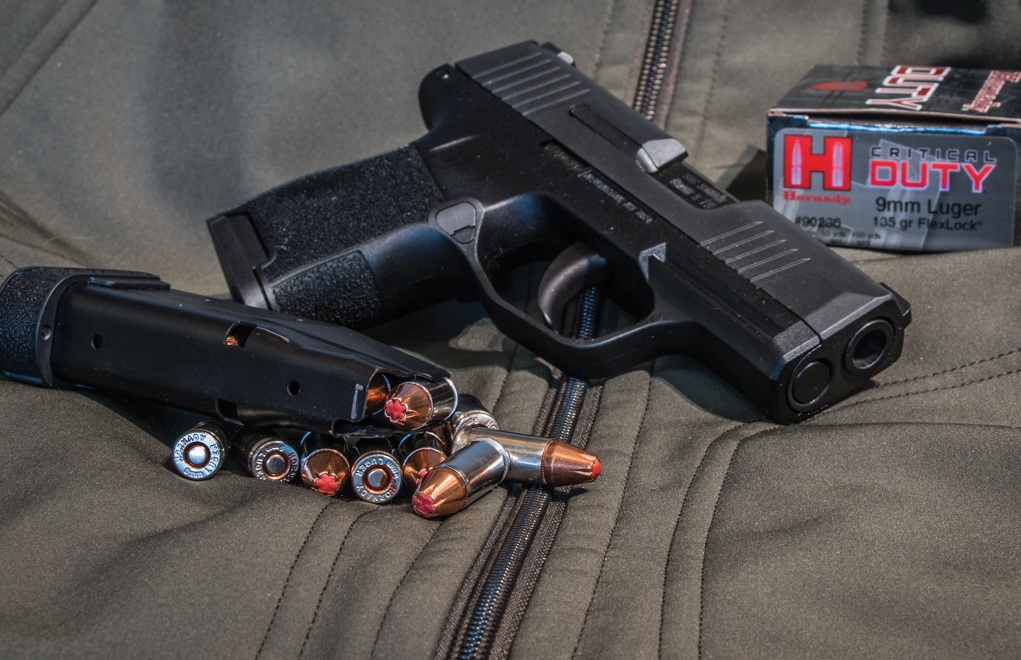

Pros
- Great sights
- Excellent Capacity
- Optics-ready options
Cons
- Ships with only one pinky extension
P365 Specs
- Caliber: 9mm
- Capacity: 10+1
- Barrel Length: 3.1 inches
- Overall Length: 5.8 inches
- Overall Height: 4.3 inches
- Overall Width: 1.1 inches
- Weight: 17.8 ounces
- Sights: XRAy3 Day/Night Sights; Optics Ready
- MSRP: $600
Is it fair to say this is the pistol that changed the face of concealed carry? Honestly, it’s not too much of a stretch. The Sig P365 has proven among the most monumental handguns to hit the market in a spell, serving up what many consider the perfect on-person self-defense package. That is a tall boast, but one the demure 9mm more than fulfills.
Above all, what makes the P365 such a spectacular heater is its size. The 3.1-inch barreled pistol is a mere 1 inch in width and tips the scales at a scant 17 ounces or so, creating one of the most concealable and easy-to-carry pistols out there. Sure enough, there are concealed carry guns, but in nearly every case they’re a compromise in power or capacity. Not so with the P365. Shipping with two 10-round magazines, the mighty mite has a payload identical to many compact models that come in nearly twice its size. Not enough on tap? Simply solved, given there are 12- and 13 or 15-round extended magazines available to improve your firepower.
Shooting-wise, the micro-compact shocks for a pistol its size. An abbreviated sight radius provides a challenge for those unfamiliar with the touchiness of small guns, yet Sig arms shooters with the tools to keep it steady. In addition to aggressive grip texturing, the striker-fired’s respectable trigger ups the gun’s accuracy potential. To boot, the 9mm is also quite easy to manipulate—an often overlooked asset.
Another point that sets the P365 apart from the rest of the micro nines and concealed carry guns in general is its modularity. The gun’s fire control unit is interchangeable, in turn, you can upsize or downsize the grip. Furthermore, this feature allows you to swap parts from other P365 models–of which there are many–to create your perfect pistol. However, we can promise the outcome will look good.
As for nits to pick, the gun is stout in recoil, but no more so than any other micro-compact. And Sig only includes one pinky extension with the pistol. Even with medium-sized hands, I find the P365’s grips too short for comfort.
These points aside, there’s little arguing Sig cooked up a game-changer with the P365.
P365 Deals
Springfield Hellcat

Pros
- Excellent capacity
- Aggressive grip texture
- Affordable
- Optic-ready and compensated models are available
Cons
- Snappy recoil
- Gritty trigger
Hellcat Specs
- Caliber: 9mm
- Capacity: 11+1, 13+1
- Barrel Length: 3 inches
- Overall Length: 6 inches
- Overall Height: 4 inches
- Overall Width: 1 inches
- Weight: 18.3 ounces
- Sights: Tritium/Luminescent Front, Tactical Rack U-Notch Rear
- MSRP: $600
As pointed out, the Sig P365 is a game-changer. The Springfield Armory Hellcat is proof. Quickly embracing the micro-compact concept, the Illinois concern cooked up a direct competitor to the popular Sig. In many respects, it produced a concealed carry gun option that runs neck and neck with the original.
No larger than a compact .380 ACP, the striker-fired is among the smallest 9mm options available today. By the tape, it measures 1 inch in width and 6 inches in length and weighs in at 18 ounces. Pretty dang concealable and easy to carry by anyone’s standards.
At the same tick, the Hellcat offers everything you’d expect out of a much larger concealed carry pistol—especially capacity. Out of the box, the 3-inch barreled pistol boasts more firepower than nearly anything in its class, shipping with an 11-round magazine. Invest in a 13-round extended-capacity magazine, well folks, you’ll holster an iron flirting with a full-sized pistol’s capacity.
Outfitted with adaptive grip texturing, the Hellcat offers a positive grip when you need it, yet the ability to reposition your hand when you need to. A flat-faced trigger combined with a featherweight break and short reset ups the pistol’s accuracy resume, as well as allows it to run when needed.
Breaking from the herd, Springfield opted for a slightly new sighting system, jettisoning the traditional three-dot sights for a U-notch. Similar in concept, the execution differs in that shooters place the fiber-optic front pipe in the white outlined U-notch. A fast and intuitive system, few will miss the old way of building a sight picture. Additionally, the OSP model offers a slide cut for mounting optics, if a red dot is more your cup of tea.
Hellcat Deals
Wilson EDC X9
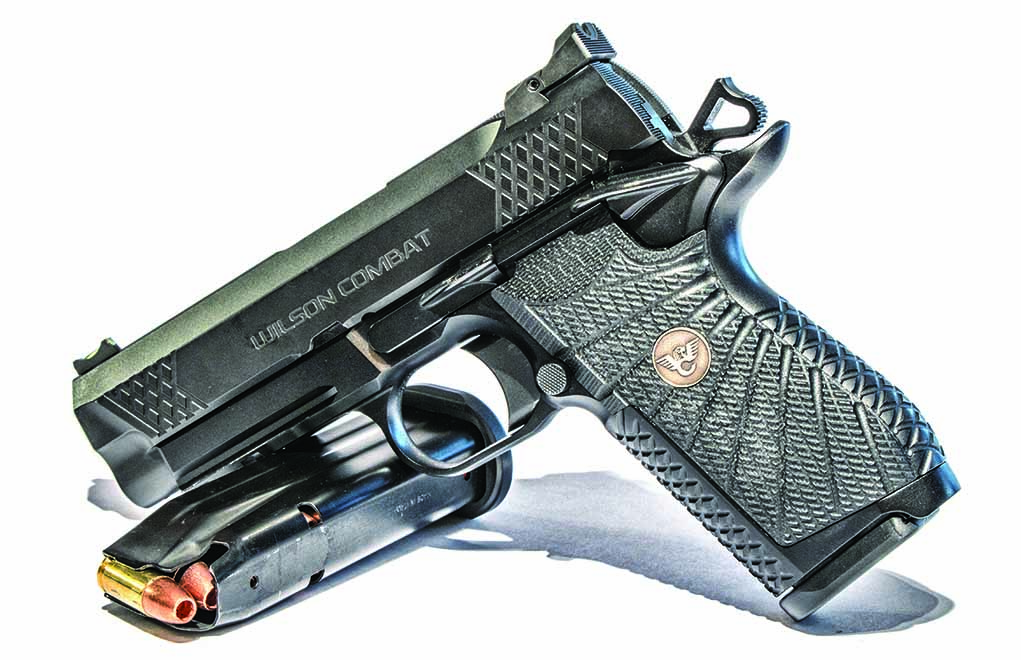

Pros
- Superior build quality
- Sublime trigger
- Factory customizable
EDC X9 Specs
- Caliber: 9mm
- Capacity: 15+1, 18+1
- Barrel Length: 4 inches
- Overall Length: 7.4 inches
- Overall Height: 5.25 inches
- Overall Width: 1.4 inches
- Weight: 29.09 ounces
- Sights: Tactical Adjustable Battlesight with fiber optic front sight
- MSRP: $3,3210
If you were to build a race gun to a concealed carry pistol’s specs, you’d likely come out with the EDC X9. This is the most highly tuned and performing pistol of our picks—with a price tag to match. But for the uncompromising souls looking to protect their six, the pistol is a perfect match.
At its core, Wilson Combat’s 9mm is a 1911, but one upgraded for modern self-defense. To the traditional side of the design, the hammer-fired gun inherits the exceptional 1911 trigger, which is light and fast. Unlike the original, Wilson has stripped the grip safety—though, for obvious reasons, the gunmaker has kept the thumb safety.
The EDC X9’s ergonomics are impeccable with the gun fitting the hand perfectly and Wilson’s XTAC pattern grips further enhance the comfort while ensuring a firm hold. Its aluminum frame adds a bit of heft to the compact pistol, but it’s far from prohibitive—comparable to a Glock 17. And the weight is a blessing of sorts, making the X9 extremely mild-mannered.
Despite a terse 4-inch barrel, the pistol can accurately fire well past typical defensive ranges. At close quarters, it’s lights out. Not only does the trigger and heft of the gun aid with this but also Wilson Combat Battlesight and a fiber-optic front, which provide quick and clear target acquisition.
In testing, the EDC X9 proved highly reliable, handling a wide range of 9mm ammunition without issue—it chewed through everything from 115-grain ball to 147-grain hollow point without a hitch. Much of this is thanks to Wilson Combat’s Enhanced Reliability System, a proprietary system designed to optimize functioning with the varying power levels of 9mm ammunition.
EDC X9
Glock 19
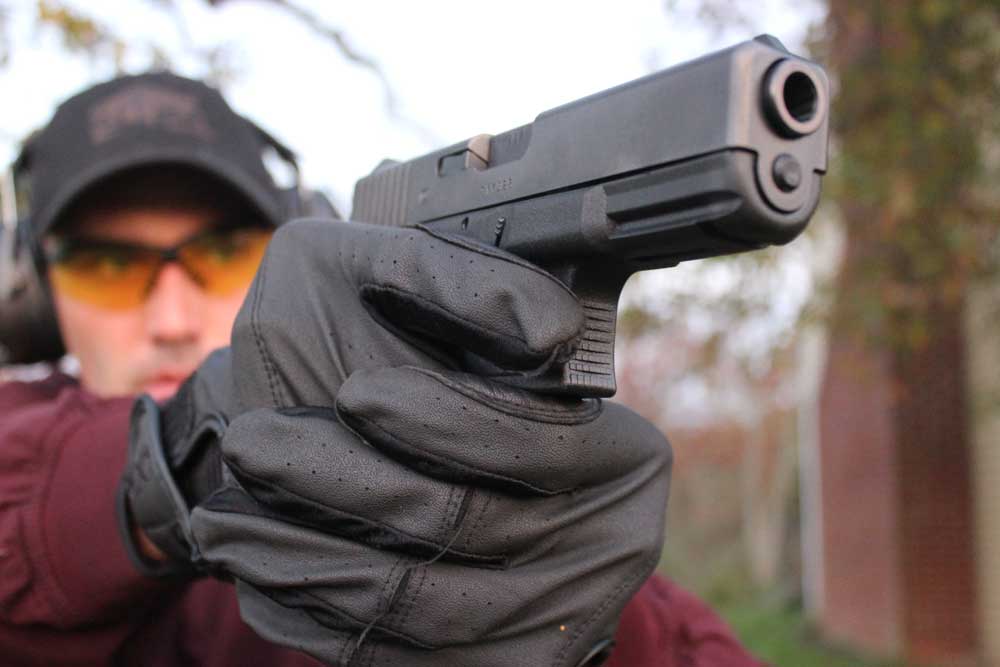

Pros
- Accurate
- Reliable
- Aftermarket parts
- Ease of maintenance
Cons
- Grip angle
- Plastic sights
- Mushy trigger
Glock 19 Specs
- Caliber: 9mm
- Capacity: 15+1
- Barrel Length: 4.02 inches
- Overall Length: 7.36 inches
- Overall Height: 5.04 inches
- Overall Width: 1 inch
- Weight: 21.16 ounces
- Sights: Polymer white dot front, outline rear
- MSRP: $600
It’s difficult to knock off the king. And certainly, the Glock 19 still has its place on the throne of best concealed carry guns.
While a larger option than many of the modern sub-compact options, I find it difficult not to love how this momma-bear option operates. It’s still very concealable, at the same tick, large enough to make it extremely manageable and accurate. Of the guns tested, this G19 provided some of the best groups at even longer engagement distances.
Not to mention, the pistol is almost boringly reliable. Perhaps this is one of the greatest achievements of the pistol, no matter what you feed it the gun will chew through it. Much of this is thanks to a painfully simplistic design that offers few opportunities for malfunctions to occur. The other bonus to this is facet, the gun is extremely simple to upgrade—if you happen to find what rolled out of the factory unsatisfactory.
Sights, I’d say are one of the areas many consider must-change—though the factory set isn’t unusable. Trigger is another one that can use some pepping up and upgrades are legion in this area. I’ll admit, I don’t hate the G19 trigger and it’s more than passible for a self-defense gun, but there are much better options out there.
One last point, while the Glock 19 is concealable—folks have been keeping it under wraps for decades—it is large by today’s standards. It’s 21 ounces unloaded and 1.26 inches in width and has a height of 5 inches. A bit of a load if you go jogging in your jorts.
Glock 19 Deals
PSA Dagger Micro
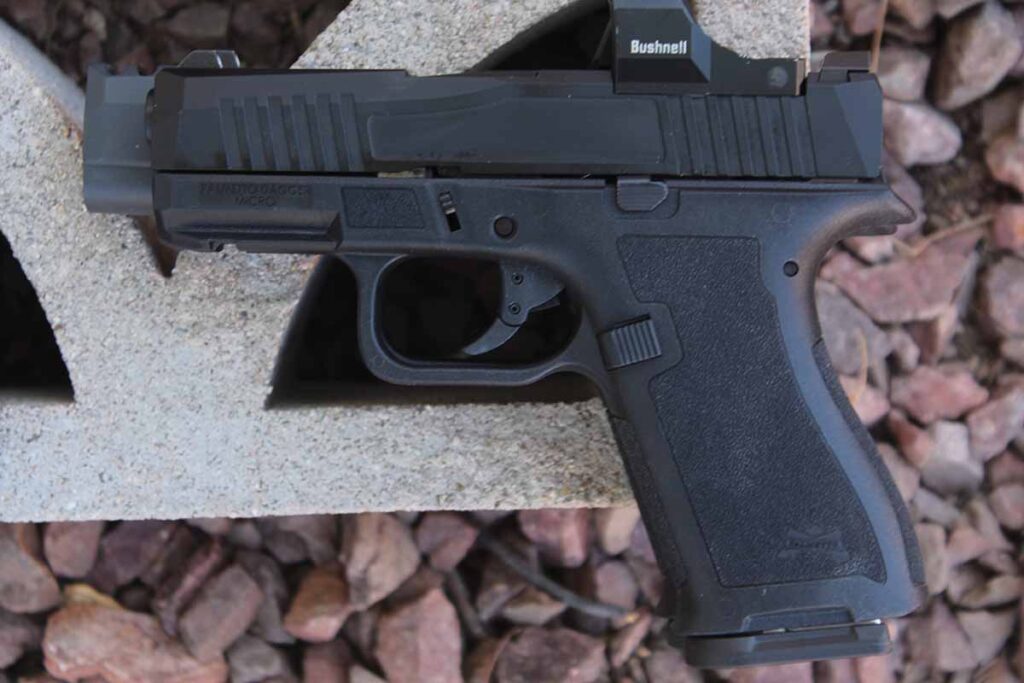

Pros
- Affordable
- Glock 43 compatibility
- Durable
Cons
- Ships with one magazine
- Few holster options
Dager Specs
- Caliber: 9mm
- Capacity: 15+1
- Barrel Length: 3.41 inches
- Overall Length: 6.5 inches
- Overall Height: 4.7 inches
- Overall Width: 1.1 inches
- Weight: 15.9 ounces
- Sights: Three-dot
- MSRP: $300
A remarkable blend of affordability, compactness and practical features, the PSA Dagger Micro hits a lot of the right notes. Surprising, given it’s the South Carolina concern’s first foray into this end of the market.
First off, as a budget concealed carry gun—one with a sub $400 price tag—don’t expect any originality. The Dagger Micro is what it is and that’s a Glock clone. Still, there are advantages to playing copycat, such as compatibility with G43, G43X and G48 pistols. And for those who have shot Glocks, well, by golly, the PSA carry gun should prove very familiar.
Overall, the pistol is fairly refined for the price point, with nice ergonomics, beveled edges and aggressive cocking serrations for enhanced manipulation. The trigger leaves a little to be desired—especially given the hinged bottom—but is responsive. And the grip is just right, with a sandpapery texture that keeps the gun where it should be—your hand.
Nicely, the gun ships with 15 round magazine, a significant upgrade over many in the compact class. Yet, PSA only gives you one. I suppose they needed to save money somewhere. And anyone familiar with the 3-dot sight system will know what to do when they pick up a dagger. Additionally, the pistol has an optic cut that accommodates Shield RMSc footprint optics for those who prefer red dot sights on their carry gun.
Reliability is another strong point for the Micro Dagger, it digested everything we fed it in testing. When it comes to a concealed carry pistol—no matter the price—this facet is priority No. 1.
Dagger Micro Deals
| Guns.com | $450 |   |
| Palmetto State Armory | $300 |   |
Ruger LCR
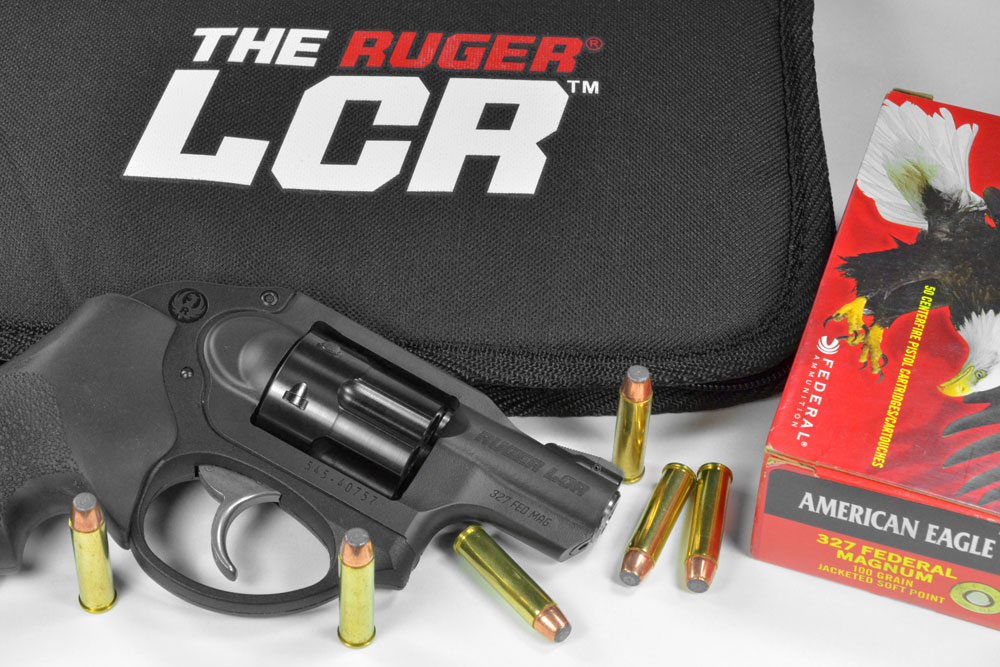

Pros
- Highly concealable
- Reliable
- Good double-action trigger
Cons
- Integral sights
- Double-action trigger not great for begginers
LCR Specs
- Caliber: .327 Federal Magnum; other calibers .22LR, .38 Special, .357 Magnum
- Capacity: 5-8 depending on caliber
- Barrel Length: 1.87 inches
- Overall Length: 6.5 inches
- Overall Height: 4.5 inches
- Overall Width: 1.28 inches
- Weight: 13.5-17.1 ounces depending on caliber
- Sights: Ramp front, integral rear
- MSRP: $739-$859
Despite rumors otherwise, the self-defense revolver isn’t dead. Or it hasn’t been since Ruger introduced its LCR (Lightweight Compact Revolver).
The minute snub-nose nearly single-handedly breathed life back into the flagging defensive revolver market when it hit the scene in 2009. And why not? At 13 to 17 ounces in weight and 6.5 inches in overall length, it is among the most concealable guns on the market today. This, in some respects, also gives it a dual purpose—not only is it a capable primary concealed carry gun, but it’s also svelte enough to serve as a backup.
Aside from concealability, the Ruger has also enhanced one of the key drawbacks of the double-action-only revolvers—its trigger pull. The gun utilizes a friction-reducing cam that lightens the trigger pull considerably and makes it surprisingly smooth. Even so, it’s still a stout 8 pounds to trip the hammer, which might not prove ideal for those brand new to shooting. Also, the sights—an integral rear and blade front—aren’t the easiest to master for more precise shooting. But at defensive range in defensive scenarios are more than adequate.
Ruger offers a bevy of chambering in the LCR, from .22 LR up to .38 Special and 9mm. Though it’s a bit of an oddball, we liked the gun in .327 Federal Magnum, a hard-hitting compromise that is forgiving in recoil.
LCR Specs
Ruger LCRx 3-Inch
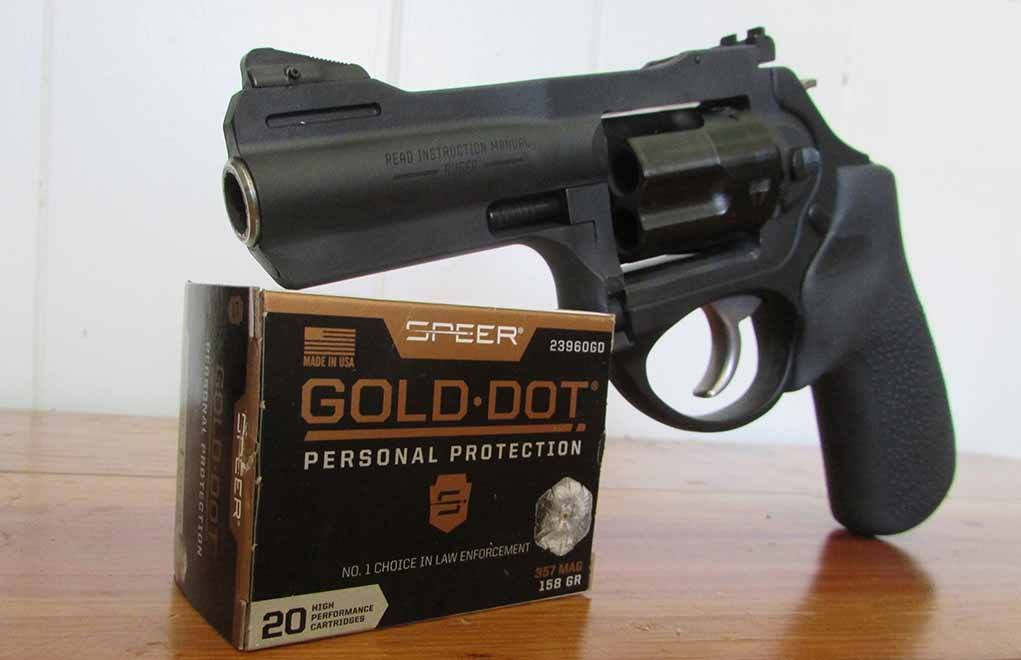

Pros
- Low recoil impulse
- Better ballistics
- Accurate
Cons
- Limited capacity
- Double-action trigger not for beginners
LCRx 3-Inch Specs
- Caliber: .357 Magnum; other calibers 9mm, 22 WMR, 22LR, .38 Special
- Capacity: 5-6 depending on caliber
- Barrel Length: 3 inches
- Overall Length: 7.5 inches
- Overall Height: 5.8 inches
- Overall Width: 1.28 inches
- Weight: 17.3 ounces depending on caliber
- Sights: Ramp front, adjustable rear
- MSRP: $859
The LCRx is the absolute mamma bear magnum for concealed carry revolvers, offering shooters everything they want in a .357 Magnum—especially the power. The secret sauce here is the gun’s 3-inch barrel that milks the ballistic potential out of the magnum cartridge.
While the snub-nose .357s have more pop than a .38 Special, even a +P .38, it falls considerably short of the cartridge’s normal performance standards. In return, you get more muzzle blast and pain. However, in my chronograph testing, the LCRx is just off a 6-inch .357 Magnum and dang near identical to a 4-inch model. All while being quite a bit more concealable.
The 5-round revolver is heavier than its little brother LCR, coming in at 21 ounces. This isn’t only due to the extra bore, but also the stainless steel frame—required for the more powerful cartridge. Despite this, it remains very concealable.
The trigger is similar to the LCR, making the gun manageable and accurate—though it still isn’t an option for those who haven’t mastered the double-action trigger pull. There are other aspects shooters should keep in mind with the revolver, as well. It has adjustable target rear sights, providing more accuracy. And its hammer has a spur. While I haven’t found either to pose a problem, each are a potential snag point and might prove uncomfortable for some, depending on how they carry. At 5 o’clock outside the waistband, it wasn’t an issue for me.
LCRx Deals
Arm Yourself With More Concealed Carry Knowledge
Ruger LCP Max
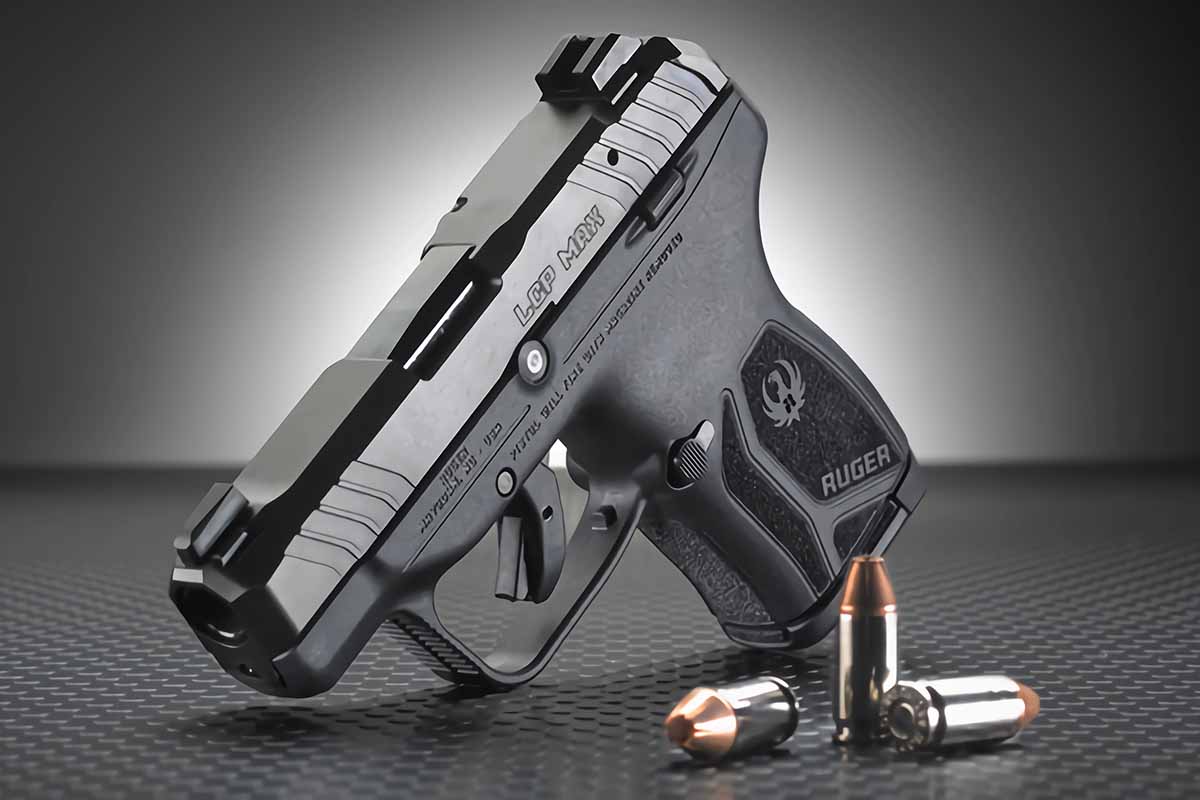

Pros
- Extremely concealable
- Capacity for size
- Good holster selection
Cons
- Short sight radius
- Small grip
LCP Max Specs
- Caliber: .380 ACP
- Capacity: 10+1
- Barrel Length: 2.8 inches
- Overall Length: 5.17 inches
- Overall Height: 3.6 inches
- Overall Width: .82 inch
- Weight: 10.6 ounces
- Sights: Tritium front, u-notch rear
- MSRP: $479
The third version of this iconic .380 pistol finally delivers what shooters have asked for, particularly its sights. I can’t say enough how much I disliked the integral sights on the LCP II (now a .22 LR in Ruger’s catalog). Not only do I not care for fixed systems, but they provided only a rudimentary sight picture. On the other hand, the white outlined rear sight of the Max and Tridium front creates a very usable and intuitive system.
One of the best features of the Max is its excellent capacity for what is certainly a pocket pistol. With 10+1 on board with its flush fit mag and 12+1 with its extended, shooters should feel comfortable with its firepower. However, Ruger slightly widened the LCP’s grip to expand it to a double stack. Not that this is a bad thing. With a little more meat on the handle I found the pistol more comfortable in the hand; add the extended mag and even my medium-sized hand could fit almost completely on the grip.
I had no issues hitting center mass out to 10 yards with the Max, even so, I would classify the pistol as a tack driver. I don’t think this surprises anyone with a 2.8-inch barreled gun, weighing all of 12 ounces loaded. And while it’s not a beast to shoot by any stretch of the imagination, it’s also not one I figure most folks will take to the range for fun.
All of that said, what the gun lacks in shootiblity it more than makes up for in concealability. I toted the Max around via a pocket holster and on the IWB, both are more than feasible and comfortable. Short Speedos, you can carry the Max confident you won’t give yourself away.
LCP Max Deals
Easy To Manipulate: Smith & Wesson Equalizer
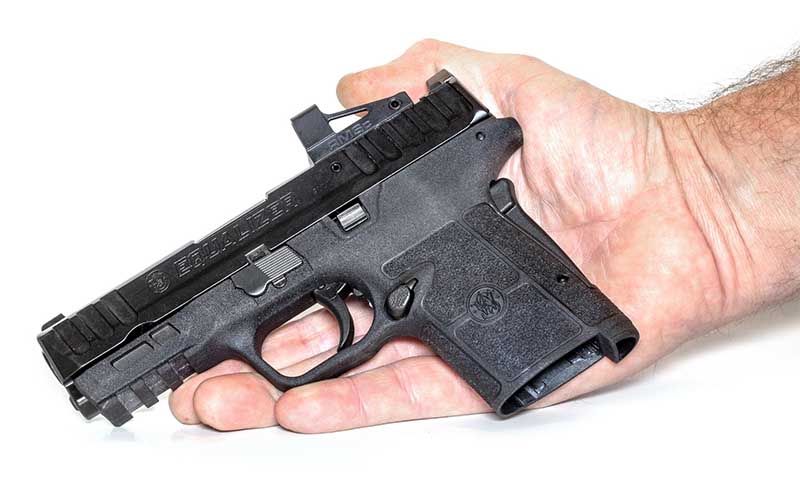

Pros
- Easy racking slide
- Optics ready
- Low recoil
Cons
- Grip Safety
- Reset not very audible or tactile
Equalizer Specs
- Caliber: 9mm
- Capacity: 10+1, 13+1, 15+1
- Barrel Length: 3.68 inches
- Overall Length: 6.75 inches
- Overall Height: 4.5 inches
- Overall Width: 1.04 inch
- Weight: 22.9 ounces
- Sights: White dot, optics read
- MSRP: $599
Easy-to-manipulate semi-autos concealed carry pistols have earned a much-needed niche in the firearms world. There are plenty of folks—through age, infirmity or just plain hand strength—who find semis difficult to manipulate. Smith & Wesson took a hard look at this class of pistol and developed the best example yet.
OK, so emblazing its name—Equalizer—across the slide is about as attractive as tailfins on a Corvette. That, however, is a rare chink in the 9mm pistol’s armor. Living up to its name, nearly anyone can operate the side and get the gun into action.
While it appears just another striker-fired compact, the design point making the pistol manipulatable is its hammer fired. Essentially, it’s a Shield EZ—long-time S&W favorite—but a double stack, shipping with 10-, 13- and 15-round magazines. Aiding the pistol’s operation externally are large and aggressive cocking serrations and cocking tabs at the rear.
Honestly, I have to admit, the pistol is a shockingly nice one to shoot. Accuracy-wise, I found it on par with S&W’s popular M&P line, but with a much crisper trigger—one of the benefits of a hammer. Certainly, the gun is on target enough for defensive action. The Equalizer also lives up to its billing in a highly manipulatable slide that with able hands you can run lighting fast.
A drawback I found to the system is holstering the pistol. Too much tension on your holster, the gun can rack when put away. I found counter pressure on the back of the slide with my thumb eliminated this issue.
Equalizer Deals
Best Backwoods Carry: Glock 20 MOS
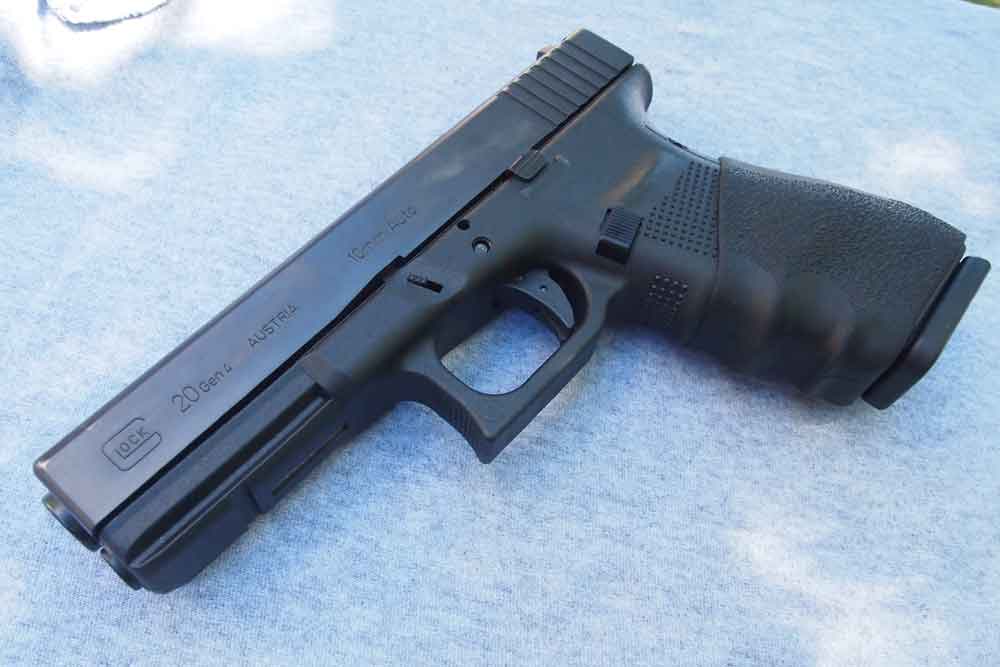

Pros
- Powerful chambering
- Reliability
- Versatile
- Extended range
Cons
- Large
- Longer trigger reach
- Recoil
Glock 20 Specs
- Caliber: 10mm
- Capacity: 15+1
- Barrel Length: 4.61 inches
- Overall Length: 8.07 inches
- Overall Height: 5.51 inches
- Overall Width: 1.12 inch
- Weight: 39.86 ounces
- Sights: White dot front, white outline rear
- MSRP: $599
Most only consider two-legged predators when shopping for concealed-carry guns. Certain circumstances call for a pistol that can handle more than upright threats. For backwoods protection, the Glock 20 exceeds nearly all others.
A 10mm, the pistol provides enough punch to batter your way out of the tightest situations and take everything down short of coastal brown bears. Even there it’ll likely make them think twice. At the same time, it is feasibly concealable, particularly in garb you’d wear into the hinterlands. That said, it’s no lightweight by carry pistol standards—weighing in at a hefty 30-ounce unloaded. A good gun belt and perhaps an OWB holster go a long way in making the G20 a more manageable CCW gun.
Surprisingly, the G20 is a very manageable pistol, even with pitching hot loads. The weight does its part in taming the 10mm’s jump, but so does the grip ergonomics. Get past the Glock rake—of which I’m no fan of—and the standard model fits the medium to large hands well and offers enough texturing, including the front and back straps—to keep the gun in place. I can take or leave the finger grooves.
It’s also lights-out accurate, particularly the MOS model outfitted with a red dot. With practice and a good trigger squeeze, the gun can consistently hit well past most defensive ranges. However, for many tight and accurate splits may take some practice.
Hogs, cougars, two-legged threats—the G20 has you covered.
Glock 20 Deals
Conceal Carry Handgun Buyer’s Guide
Concealed Carry Lifestyle
Above all, becoming an armed citizen is a lifestyle choice. By this we mean, your life will conform around your concealed carry gun. Don’t let this scare you off. It’s less daunting than it seems, yet it merits comment.
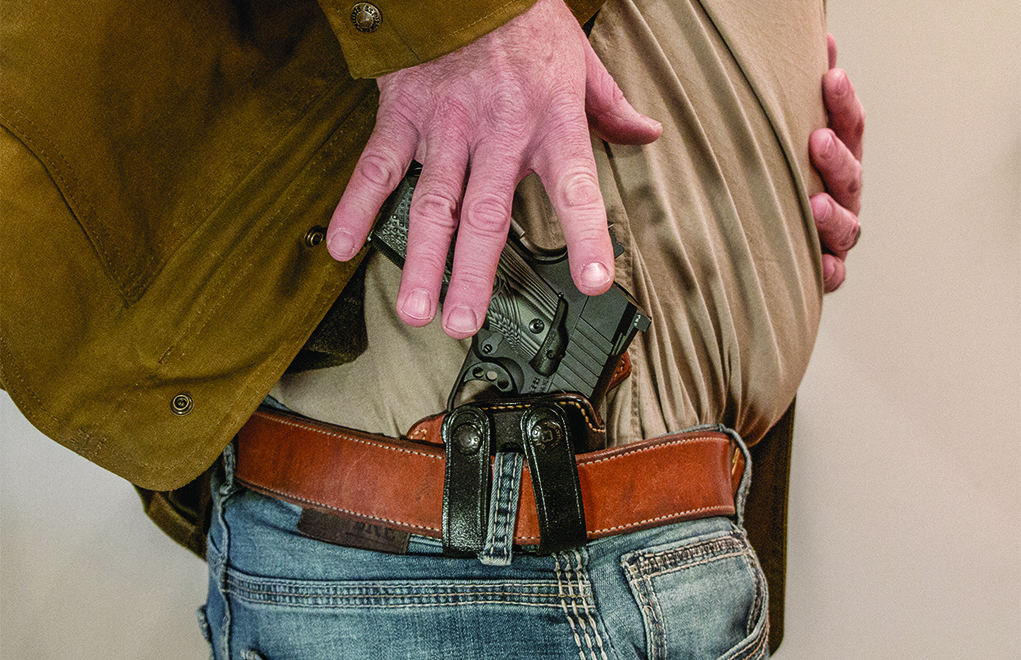

After purchasing a concealed carry gun, plan on finding a reputable firearms instructor and enrolling in his or her classes. Generally, they’ll offer different levels of training, from basic pistol courses many states require to procure a concealed carry permit, to instruction on advanced concepts such as dynamic shooting, low-light engagements and mindset. Legal education is a must as well. America is a patchwork of self-defense laws, so be certain you find something tailored to where you live and travel so you have a well-formed idea of when, where and how you can justifiably use lethal force.
The greatest demand going armed makes is mastery of your firearm. Just like buying a guitar doesn’t make you a musician, purchasing a concealed carry gun doesn’t make you an expert in self-defense or the use of lethal force. You must educate yourself, practice and continue doing so. Essentially, it’s a lifetime undertaking. Don’t throw up your hands, because it’s the hardest work you’ll ever love with a side benefit of a lot of range time.
Once you have basic instruction under your belt, plan on refresher courses in the future. In the meantime, practice. We won’t prescribe a particular regimen here, because it will differ for each armed citizen. Your training should result in knowing your concealed carry gun inside and out, from muzzle to butt and all the quirks in between. Range time is the most obvious arena for learning and excelling with your pistol or revolver. But a solid routine of dry-fire drills at home works miracles on a learning curve and doesn’t cost a thing.
The other lifestyle aspect that comes with a concealed carry gun is clothing. Yup, that wardrobe is going to need updating … most likely. Unless you’re still mired in the baggy days of the grunge movement, it’s a safe bet much of your wardrobe won’t keep your gun concealed. Or, if it does, you’ll feel plum uncomfortable. Again, we won’t touch on the fine points here—there are loads of them. Just expect to make a clothing investment along with your concealed carry gun.
Concealed Carry Holsters
Hand-in-hand with clothing is a holster. You didn’t think you were going to tuck that baby in your waistband naked, did you? This is a vast topic, given the numerous types of concealed carry holsters on the market today:
- IWB
- OWB
- Shoulder
- Ankle
- Belly Band
- Various Off The Body
Each has pros and cons and fit certain armed citizens, but not all of them. However, essentially all of them do the same job: retain the gun, cover the trigger (among the most important), protect you and the gun, enhance concealability, make carrying comfortable, and facilitate a smooth draw and re-holster. That’s a mouthful.
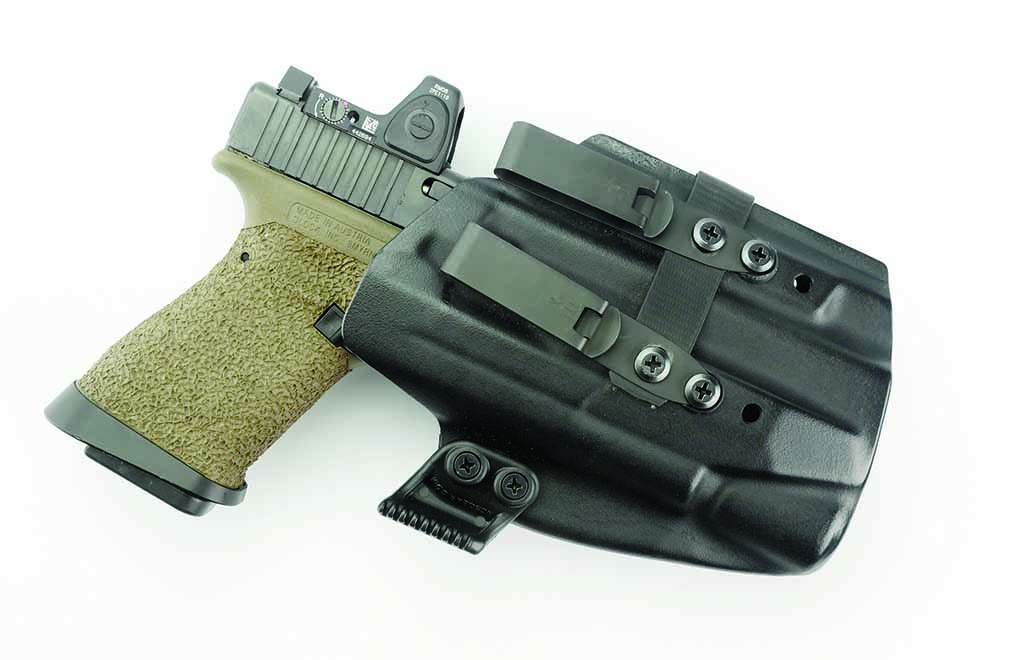

Stick with Kydex for your AIWB holster. Leather will become soft over time … which is a bad trait for an appendix rig.
Kydex is almost always a solid choice for holster material.
Unfortunately, we don’t have the magic bullet so that you hit the perfect holster your first time out. Nobody does. All we can say is, expect plenty of trial and error—and a closet shelf of rejects—before you find the ideal hanger for your concealed carry gun.
CCW Gun Fit
No two concealed carry guns are alike nor are two armed citizens. In turn, the pistol that works for you might be unwieldy to your friend. What this comes down to is fit, and there are two basic factors pertaining to concealed carry guns.
- How the gun fits your hand
- How the gun fits your style of carry
Most new shooters tend to think all guns are alike. They pick a trustworthy name and assume all is right with the world. Nothing could be further from the truth.
Concealed carry guns need to fit your hand properly, facilitating a fundamental high grip, otherwise, there can be control issues. Even the relatively mild-mannered 9mm is jumpy if oversized compared to a particular shooter. Gunmakers have engineered some wiggle room into their guns; most new polymer-framed pistols come with replaceable backstraps and palm swells of different sizes allowing for a level of customization. Take the time to find the make/model that fits you best. A good tactic is to go to a range that has a good selection of guns for rent, and give the ones you’re interested in a test drive. The proof is in the pudding, as they say.
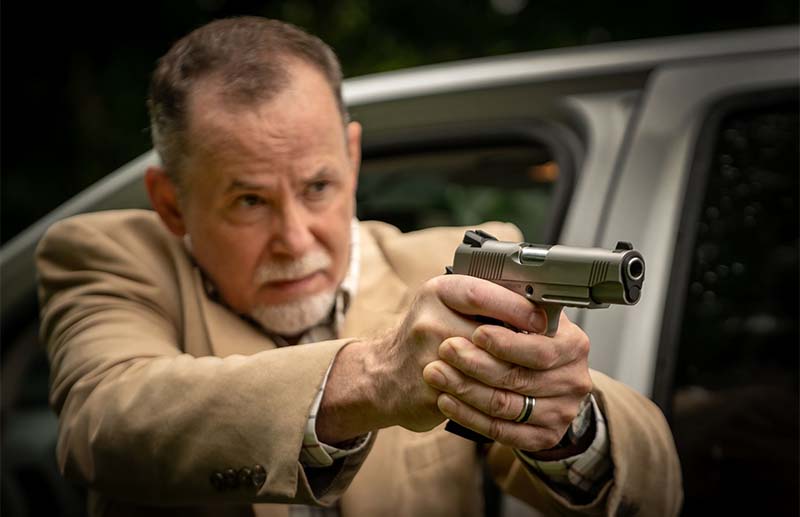

As to carry fit, the whole idea behind a concealed carry gun is to keep it concealed. Depending on who you are, how you carry and your particular lifestyle, not every gun will fit the bill. While a 250-pound trucker might easily keep a Government-size 1911 under wraps with no problem, a 98-pound lady business executive might find it more challenging. Think hard about your usual attire (yes, you’ll update some of it), daily routine and potential carry methods as you go through the buying process. These will provide guide marks steering you to the ideal choice out of all the concealed carry guns.
The Best Caliber For Concealed Carry
Hoo boy … here’s a can of worms. Ask 100 people the best caliber for a concealed carry gun and you’ll get 100 answers—probably including 8.5 Mars, .455 Webley and some other oddballs. The topic is so divisive friendships have been lost and gun forums burned to the ground arguing what’s top dog. Presently, the most popular concealed carry calibers are:
- .380 ACP
- .38 Special
- 9mm
- .40 S&W
- .45 ACP
- 10mm
- .357 Magnum
So, which one is right? The dirty secret is, all of them.
Given ammunition advancements over the past 20 years, particularly bullet design, every one of the cartridges can save your life. The rub is, some of the smaller and lower velocity options—.380 ACP and .38 Special, we’re looking at you—require more homework to find acceptable self-defense loads. The big boys—10mm and .357 Magnum—require more skill to wield effectively. Don’t let either factor turn you off any of those if the particular concealed carry gun that fits you is chambered thusly. Just expect to spend more time making them work.
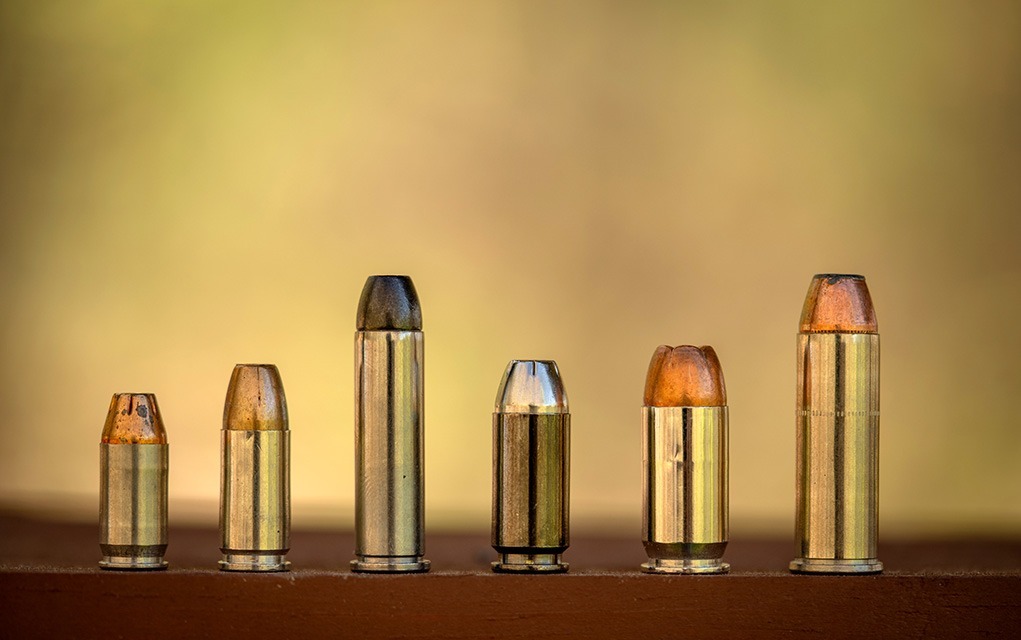

The Black Hills 125-grain Subsonic HoneyBadger in 9mm has flutes cut to increase effectiveness at low speed. The old-school 23-grain FMJ is ready to go at subsonic velocities—just as it was over a century ago.
That leaves us with 9mm, .40 S&W and .45 ACP. These are the most popular self-defense calibers on the market. Again, we can’t choose for you, only point out each that is an effective option, capable of neutralizing a threat, and are widely available. You need to find what you shoot best and that comes in a make/model that fits your lifestyle. A range that rents guns is invaluable for puzzling this out. Take each for a spin before you buy!
What about a .22 LR and other small fries? While inadvisable for most armed citizens, if that’s all you can get or effectively shoot, it’s better than nothing.
Best Concealed Carry Guns FAQ
Compact pistols have a 4-inch barrel and micro compacts a 3- to 3.5-inch barrels. We find these lengths the easiest to carry. However, the longer the barrel of a gun the more accurate it is due to a longer sight radius. In turn, the best length for a pistol is one that facilitates the most accuracy, while being easy to conceal.
There is no consensus on which caliber is the best, though, the 9mm is the most popular. For the most part, .380 ACP is considered the minimum caliber for self-defense.
One that completely covers the trigger, for starters. Aside from a way to carry your concealed carry gun, a holster is a safety device. From there, much of it is a personal preference. I personally prefer inside the waistband (IWB) holsters, because they provide the most concealment. However, in the colder months, I will use an outside the waistband (OWB) holster for comfort.
While many gun salesmen push small and light revolvers, my choice for most women would be a compact or micro compact pistol. The trigger pull is lighter and more predictable. For women concerned about being able to manipulate the slide, the Smith & Wesson Equalizer would be my first choice; for those looking for less recoil, the Springfield Hellcat with a compensator would be an excellent option.


Next Step: Get your FREE Printable Target Pack
Enhance your shooting precision with our 62 MOA Targets, perfect for rifles and handguns. Crafted in collaboration with Storm Tactical for accuracy and versatility.
Subscribe to the Gun Digest email newsletter and get your downloadable target pack sent straight to your inbox. Stay updated with the latest firearms info in the industry.
Read the full article here

![Best Concealed Carry Guns In 2024 [Field Tested] Best Concealed Carry Guns In 2024 [Field Tested]](https://gundigest.com/wp-content/uploads/Wilson-Combat-EDC-X9S-1.jpg)


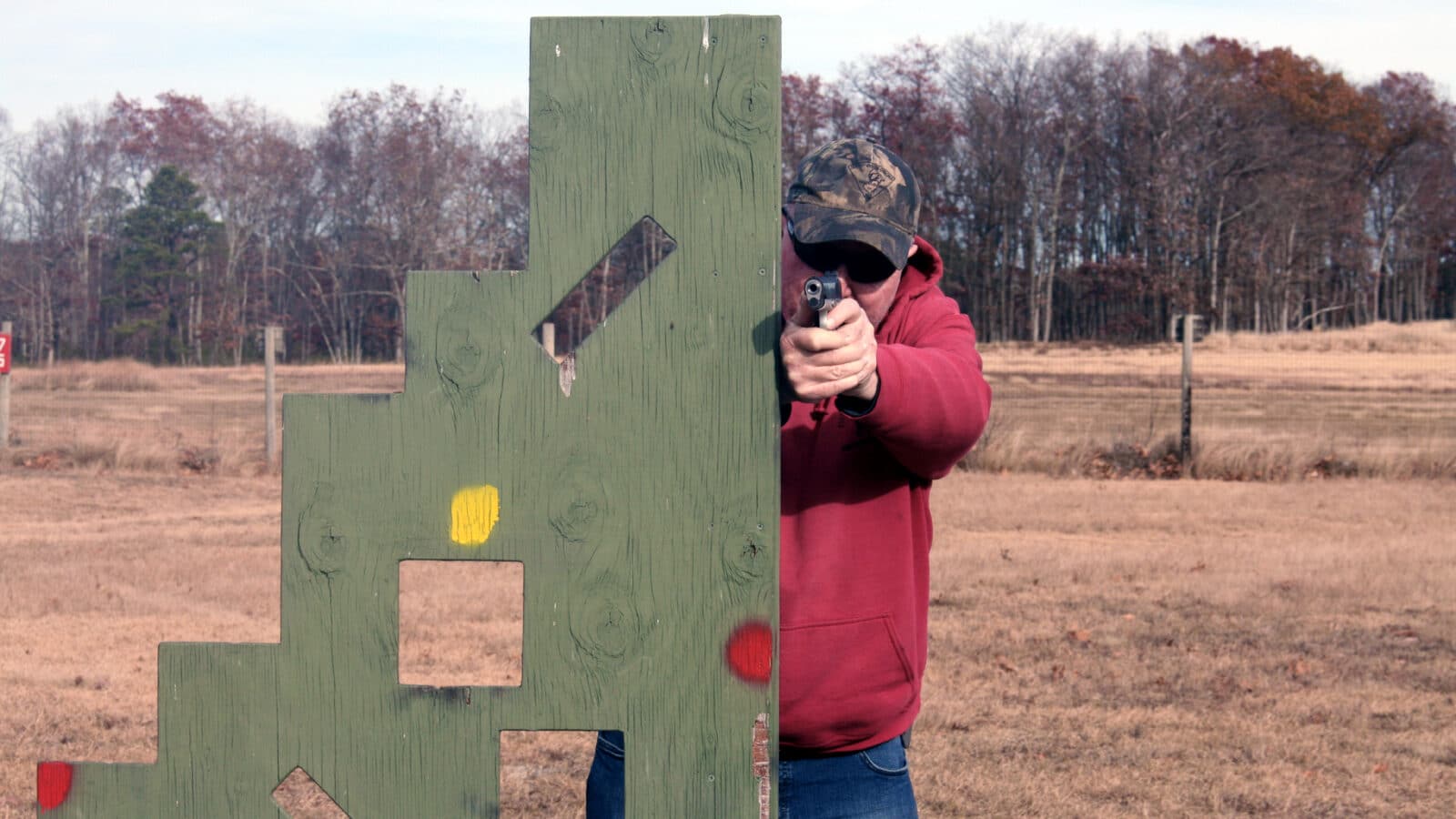







Leave a Reply